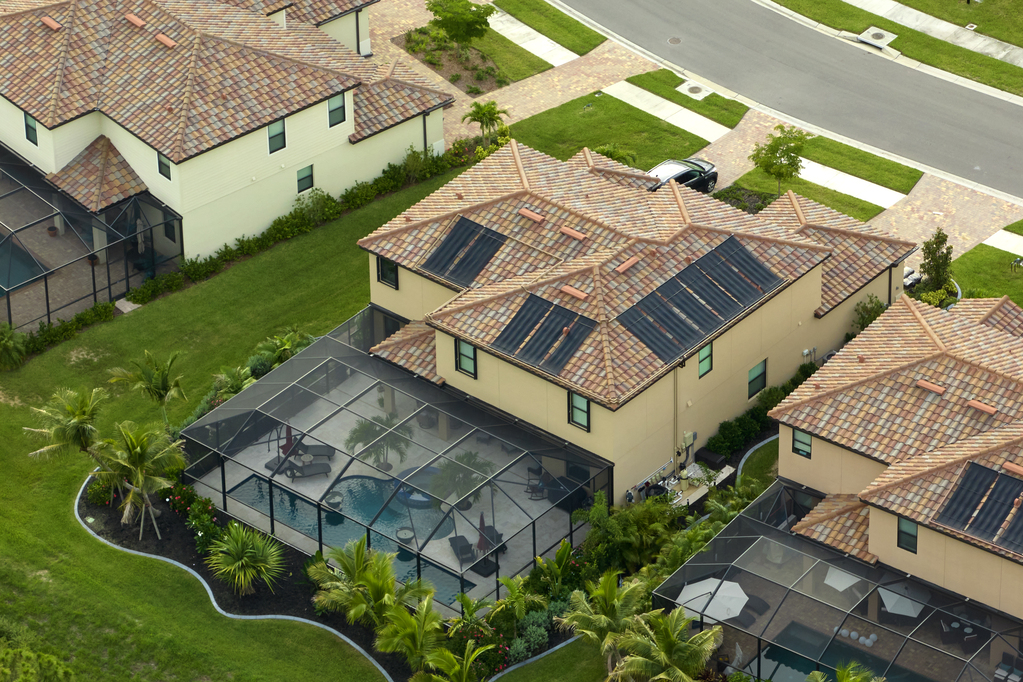In an insightful conversation with Fortune, Garret Gray, the president of CoreLogic’s global insurance solutions business, shared his personal experience with the challenges of insuring his Los Angeles home, which is situated in a high-risk fire zone. This anecdote serves as a microcosm of the broader issues plaguing the home insurance industry in the United States, particularly in climate risk-prone states like California and Florida.
The United States faces an annual cost of $23 billion due to extreme weather events, which have become increasingly frequent and severe. This escalation in natural disasters is wreaking havoc on the homeowners’ insurance sector, especially in California and Florida, where the housing markets are experiencing a significant insurance shock.
In California, the situation is particularly dire. Homeowners’ insurance has become a complex maze, with many property insurers either limiting their policy offerings or refusing to write new homeowner policies altogether. State Farm, the largest home insurer in California, has ceased accepting new applications for property insurance, citing historic increases in construction costs, growing catastrophe exposure, and a challenging reinsurance market. The company is also reportedly raising rates by an average of 20% this year.
The insurance crisis in California mirrors a nationwide trend, as explained by Amy Bach, the cofounder and executive director of United Policyholders. Both wildfire-prone California and hurricane-prone Florida are at the forefront of this crisis, with Florida experiencing a mass exodus of home insurers. The severity and frequency of extreme weather events are escalating, exacerbating the insurance shock.
The insurance industry is grappling with a confluence of factors that point to an uncertain future. Insurance executives are increasingly concerned about the frequency and cost of claims from policyholders, alongside the growing impact of extreme weather events. The rise of technology, such as CoreLogic’s risk-scoring and assessment system, is enabling insurers to filter out higher-risk properties, further complicating the insurance landscape. Additionally, the reinsurance market, which provides insurance for insurance companies, is facing its own set of challenges.
In California, residents who are unable to obtain insurance through regular companies can turn to the FAIR Plan, but this option is often expensive and offers minimal coverage. Many Californians fear losing their homes as they struggle to afford the FAIR Plan, which is receiving a thousand applications daily.
The insurance woes are not limited to California. In Florida, state officials are updating building codes to address the increasing severity of weather events, particularly wind. However, these changes primarily apply to new constructions or significantly renovated buildings, meaning immediate relief is limited. Despite this, there is hope that, over time, more resilient buildings will lead to reduced claim costs and, consequently, lower insurance premiums.
Homeowners in Florida are already facing the highest insurance premiums in the nation, averaging $6,000 per year, compared to the U.S. average of $1,700. This financial burden is compounded by the fact that climate risks are not confined to just California and Florida. For instance, Maui, historically at low risk for wildfires, experienced a series of devastating fires last year, indicating that weather-related catastrophes are becoming more unpredictable and widespread.
The insurance market’s troubles have a direct impact on the housing market. The difficulty in insuring properties is causing real estate deals to fall through, affecting both buyers and sellers. Prospective homeowners are becoming more cautious, considering factors like local weather events and surrounding vegetation to assess a property’s insurability. This shift in the market is making some homes more desirable and marketable, albeit at a higher cost, while others become less attractive to buyers.
In conclusion, the ability to obtain homeowners’ insurance, once a given, is no longer a certainty in today’s market. This reality poses significant challenges and emotional tolls for homeowners, as their homes represent not just a financial asset but also a safe space for their families. As the insurance and housing markets continue to evolve in response to these challenges, understanding and navigating these changes becomes crucial for homeowners and potential buyers alike.


